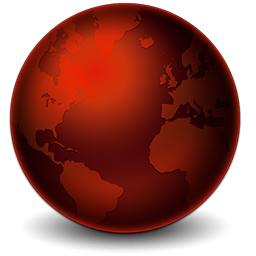by Daniel Hagmeijer, head of strategy & experience design, Mirum
ICYMI: Part one of this series explores how empathy can help you create brilliant ideas with impact.
Now it’s time to explore the second ingredient necessary for cooking up a brilliant idea: Diversity.
Creativity is fueled by diversity. The more people you have helping to solve the problem you identified when empathizing, the more likely you are to create solutions that are new, exciting and creative. How?
Your everyday experiences are unique. Out of seven billion people on this planet, only you can speak to what you experienced yesterday and today, which create different nodes of thinking. The different ways peoples’ thoughts are structured allows them to make different connections.
In essence, new ideas are created by combining two or more disparate pieces of information in your mind.
But it’s not that simple. Your mind works in standardized ways, as suggested by Daniel Kahneman in his book Thinking, Fast and Slow. So you don’t get confused by all the different information that comes at you every day, your mind bundles similar pieces of information together.
Because of that, your instinctive solution to a problem is based on information that’s related to the problem, leading to mediocre or even substandard ideas.
For example, you are asked to solve the problem that people aren’t recycling in rural areas. Your immediate reaction might be to educate people, create flyers that talk about the consequences of not separating recyclable materials, etc. All these ideas are associated with waste management in your mind, and are things that come to the foreground as solutions. Are they possible solutions? Maybe. Are they very creative? Not really. Would they move people to action? Probably not. Do you see how these associations are limiting your set of solutions?
You need to go beyond the obvious, and to do that, besides the right tools, you also need people who are different from you to make connections you might not have made. Diverse teams produce more creative results than teams in which all members are from a similar background.
Most people think creativity belongs to the domain of the so-called creatives, the art directors, painters, dancers and copywriters of the world.
But this is where they are wrong. Creativity belongs to all of us. Every person on this earth has the power to be creative; in fact, there isn’t a four-year-old on this planet who isn’t creative. It’s just that creativity gets pushed out of us during the schooling years. Sir Ken Robinson has a fascinating take on this, one of the most viewed TED talks on the topic.
Back to the recycling problem: Get someone else involved, someone different from you with a different perspective on the situation, perhaps someone who works at a charity. The act of recycling can be seen as an act of goodness for the environment, while donating to a charity is an act of goodness for other people. How would he or she tackle it? How can you, together, come up with solutions by combining your unique thoughts?
Besides diversity in people, you also need diversity in ideas. The more ideas you generate, the more nodes you create that lend themselves to making a connection with the team. That’s why it’s important to write them out and show people what’s in your head, no matter how stupid you might think it is. Quantity over quality to arrive at quality later on, if you will.
At Mirum, not only do we have sessions where we get people with diverse backgrounds together—designers, strategists, topic experts, situation experts, technologists, and more—we also get them in the right mood for innovation, using different techniques like brain stimulation card decks, brain writing and group rotation. The key is to generate as many different ideas (or nodes) as possible, and see how one idea leads to the other. That’s the power of diversity, in people and ideas, that leads to creative solutions. For the recycling example I mentioned above, we generated over 1000 different ideas by getting different people in a room to stimulate creative thinking. Combining and building on those ideas allowed us to discover new things and make novel combinations we didn’t think of before.
As I mentioned at the beginning of this article, diversity fuels creativity—now it’s up to you to make sure you create the fuel.
Be on the lookout for Part III of this series where I’ll be covering the third essential ingredient: collaboration.
Discover all the features of the newest version of single-user font manager, Suitcase Fusion, in this FREE live webcast on Dec. 7. Reserve your spot today!







